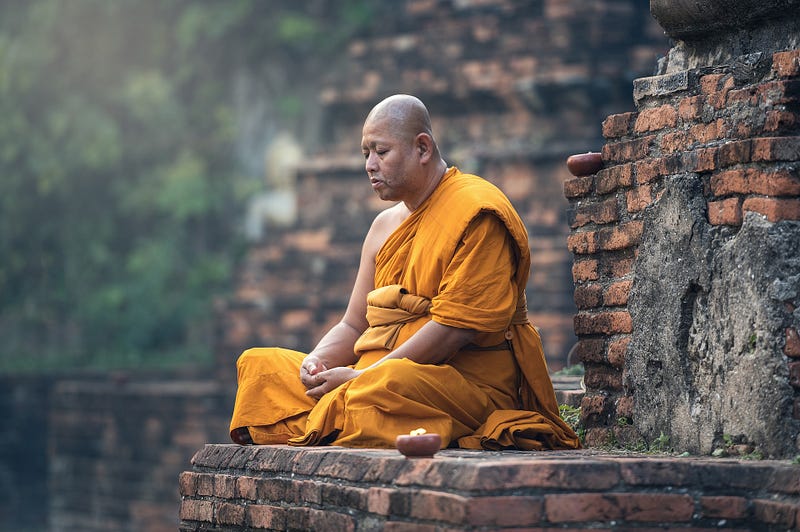Connection, communion and communication

When I first heard about meditation a few years ago, I was very perplexed. Why? Because, intuitively, it felt natural. A part of me knew or sensed what it was. But regardless of how hard I tried understanding it from a logical perspective; not much happened until eventually, I gave up battling with my thoughts for the few minutes I tried, which felt like an eternity.
Like most, I turned myself to all sorts of apps, guided meditations, “tutorials” and what not. While I did feel a thing or two, I remained unsatisfied. It wasn’t feeling true. I yearned for something more, a deeper connection, a communion — with who? God? The Universe? My soul? I didn’t know. But in my heart, that’s all I wanted — to connect, to commune.
Stubbornness is often perceived as being “bad.” It’s true. Sometimes, you have to learn to “lose,” and let loose. Stubbornness, however, isn’t completely bad neither. In fact, sometimes we need our stubbornness to learn. I’m still learning to manage my stubbornness, but I can tell you that even though I became skeptical about meditation in general, I wouldn’t let go of it.
I researched all I could. I asked directly to people. I learned from them. I paid very close attention to how meditators spoke, what words they used, and what their body language said because that’s how you come from the other person’s experience; and somehow “absorb” what they emanate.
That’s how you truly learn, a form of “osmosis,” if you will.
Anyhow.
As I started tweaking a few things, which I will share with you in a few minutes, things I’ve learned from this long process of research and experimentation, the connection I yearned for finally got established!
I was able to connect, and my craving for this connection was “gratified.” I was finally able to enter into a state of communion with something much higher and sacred than what I was accustomed to.
It’s at this point that it all “clicked.” And here’s what I understood…
Meditation is not only reserved for a few hermits wearing robes and living in caves. Meditation is a natural function of all human beings.
And when you go deeper in your meditation, you realize that everything seems to be in perpetual meditation. But this is another subject for another time.
Now coming back to the subject. You do not need to meditate on things or spiritual entities. Obviously, there are different sorts of meditations with different purposes.
Some people meditate to find peace and calmness. Some people meditate to be prepared mentally for an upcoming situation. Some people meditate to reflect on life’s principles. Some people meditate to ground themselves in the moment. Some people meditate to communicate. And so on.
In your case, if all you want to do is get started with meditation because you feel like you need to “connect,” as I did, here’s what to do:
- Get comfortable
- Close your eyes (visuals distract; you’re wanting to establish a deeper connection with yourself so you need to go beyond normal thoughts and distractions)
- Focus on your breath; thoughts may come up, be aware of them and shift your focus back to your breath
- Do it for 10–20 min daily
- Don’t expect much
- Be consistent
- Try bringing meditation in your life in general; during a walk or while waiting for the bus as an example
In time, depending on your familiarity with meditation, you will feel “loosened,” under less “restrictions,” as if you’ve been untied in some way. Yes, you will still be you, but you’ll also be more than just you.
There are many studies on the benefits of meditation which can be found fairly easily. But one of the most important thing I’ve observed about meditation is this:
It helps us live with a bigger perspective; and because we have a broader view of things, we become a better human being. We react less to unimportant matters. We become more enduring. We become more patient. We become wiser. Etc. And these traits help us evolve faster because we’re able to learn our life lessons more efficiently, without always making a fuss about everything.
I hope this piece helped you understand that you are free to meditate wherever you are, simply by focusing on the steps above. In time, it will become natural/second-nature, and you’ll be able to enter the meditative state at will.
If you have any related questions, be sure to ask them in the comments.
As a final note.
Most people embarking on the spiritual path, actually, even those who have been on it for a while now, are confused about what they should do due to the conflicting information out there.
What’s the cause? People trying to compensate their lack of understanding through the use of fancy explanations. The result? Confusion.
The spiritual path shouldn’t be confusing. It requires simple directives and consistency on your part. If you resonate with those teachings, I wrote a book with the only purpose of helping you understand what the main blocks to spiritual growth are, how to overcome them, and grow spiritually as a result. Check the book here.
Thank you for reading!